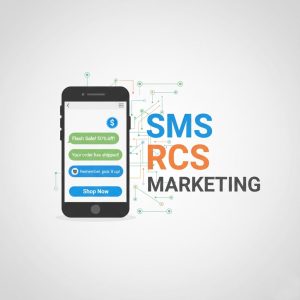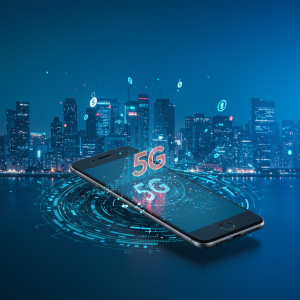Beacon Marketing: The Complete Guide to Location-Based Customer Engagement

What Is Beacon Marketing and Why Is It Transforming Retail?
Beacon Marketing represents one of the most important technological advances in site -based marketing strategies. In its origin, Beacon Marketing uses small wireless transmitters using Bluetooth Low Energy (BAG) technology to send a goal message to the smartphone within a specific proximity. This revolutionary prospects for customer engagement have changed how businesses interact with consumers in physical places, build spontaneous bridges between digital marketing and experiences in the store.
Unlike traditional marketing methods that cast wide nets hoping to capture potential customers, beacon technology enables highly personalized, location-specific communication that reaches consumers precisely when and where it matters most—when they’re near or inside your business location. This precision targeting capability makes beacon implementation an essential strategy for mobile-first businesses seeking to enhance customer experiences and drive conversions.
How Beacon Technology Works: The Technical Foundation
Understanding the mechanics behind beacon marketing helps businesses implement this technology effectively. Beacons are small, battery-powered devices that can be strategically placed throughout retail spaces, event venues, museums, or any physical location where customer engagement is desired.
The Beacon Communication Process
- Signal Transmission: Beacons continuously broadcast signals using Bluetooth Low Energy (BLE) technology.
- App Detection: When a customer with a compatible app on their smartphone enters the beacon’s range (typically 1-70 meters), the app detects the signal.
- Contextual Triggers: The detected signal activates predetermined actions based on the customer’s location within the space.
- Personalized Engagement: Customers receive relevant notifications, offers, or information directly on their devices.
The beauty of beacon technology lies in its simplicity and low power consumption. Most beacon devices can operate for years on a single battery, making them cost-effective tools for long-term marketing strategies. Additionally, the BLE protocol ensures that beacon signals don’t interfere with other wireless communications and don’t drain smartphone batteries excessively.
Types of Beacons in Modern Marketing
The beacon ecosystem has evolved to include various formats and protocols that serve different marketing needs:
iBeacon (Apple)
Introduced by Apple in 2013, iBeacon was the first widely adopted beacon protocol. It works primarily with iOS devices but is also compatible with Android platforms. iBeacon technology excels at:
- Precise indoor positioning
- Push notification delivery
- App triggering based on proximity
Eddystone (Google)
Google’s open-source beacon format offers broader functionality compared to iBeacon:
- URL sharing capabilities (Physical Web)
- Cross-platform compatibility
- Telemetry data transmission
- Frame variety for different use cases
AltBeacon
This open and interoperable protocol was developed as an alternative to proprietary formats, offering:
- Manufacturer independence
- Customizable data fields
- Open specifications for developers
The choice between these beacon types depends on your target audience, technical requirements, and specific marketing objectives. Many sophisticated marketing strategies employ multiple beacon protocols to maximize reach and functionality.
7 Powerful Benefits of Implementing Beacon Marketing
Businesses across industries have discovered numerous advantages when implementing beacon marketing strategies:
1. Enhanced Customer Experience
Beacons create opportunities for frictionless interactions that delight customers. From automatic check-ins to personalized greetings, these micro-moments of convenience significantly improve how customers perceive your brand. Research by Retail Dive shows that 71% of shoppers who receive personalized in-store assistance report higher satisfaction levels.
2. Increased Engagement Rates
The contextual relevance of beacon-triggered messages dramatically increases engagement compared to traditional marketing channels:
- Push notifications from beacon-enabled apps see open rates of 80-90%, compared to 20% for standard push notifications
- Interaction rates for proximity-based offers average 19%, substantially higher than email marketing’s 3-5%
3. Higher Conversion Rates
The proximity and timeliness of beacon marketing translate directly to improved conversion metrics:
- Studies by Marketing Technology Insights indicate that beacon-triggered offers are 16 times more likely to be redeemed than traditional coupons
- Retail locations using beacons report average sales increases of 8-15% for promoted items
4. Valuable Customer Insights
Beacon interactions generate rich datasets that provide unprecedented visibility into customer behavior:
- Foot traffic patterns
- Dwell time in specific areas
- Product interaction frequencies
- Cross-department shopping journeys
These insights enable continuous refinement of store layouts, staffing decisions, and inventory management.
5. Improved Attribution Tracking
For marketers, beacons solve the persistent challenge of connecting online marketing efforts to offline purchases:
- Track which digital touchpoints led to store visits
- Measure actual conversion rates from digital campaigns to in-store sales
- Calculate accurate ROI for omnichannel marketing investments
6. Competitive Differentiation
Despite its effectiveness, beacon marketing remains underutilized, creating opportunities for forward-thinking businesses to stand apart. Companies employing sophisticated mobile engagement strategies through beacon technology often become industry trendsetters.
7. Cost-Effective Implementation
Compared to many marketing technologies, beacon implementation offers an attractive cost-benefit ratio:
- Individual beacons typically cost $20-50
- Minimal infrastructure requirements
- Low maintenance needs
- Scalable deployment options
Strategic Applications of Beacon Marketing Across Industries
While retail applications often dominate discussions about beacon technology, innovative implementations extend across numerous sectors:
Retail Excellence
Retailers leverage beacons to create immersive shopping experiences:
- Welcome messages when customers enter stores
- Department-specific promotions as shoppers navigate the floor
- Complementary product suggestions based on items viewed
- Loyalty program integration with instant point accumulation
- Digital product information delivery when physical items are examined
Hospitality Innovations
Hotels and resorts enhance guest experiences through beacon touchpoints:
- Automated check-in processes
- Room location guidance
- Facility information delivery
- Personalized concierge recommendations
- Seamless room service ordering
Event Optimization
Conference and event organizers improve attendee experiences with beacon-enabled features:
- Interactive venue maps
- Session schedule reminders
- Networking facilitation
- Speaker information delivery
- Post-session feedback collection
Transportation Enhancements
Airports, train stations, and transit hubs streamline passenger journeys:
- Wayfinding assistance
- Real-time gate/platform updates
- Nearby amenity information
- Transportation connection details
- Security checkpoint wait time updates
Healthcare Applications
Medical facilities improve patient care and operational efficiency:
- Appointment check-in automation
- Navigation assistance through complex facilities
- Wait time updates
- Prescription pickup reminders
- Post-visit care instruction delivery
Implementing Your Beacon Marketing Strategy: A Step-by-Step Approach
Creating an effective beacon marketing program requires thoughtful planning and execution:
1. Define Clear Objectives
Begin by establishing specific goals for your beacon initiative:
- Drive foot traffic to physical locations
- Increase conversion rates for specific products
- Enhance customer loyalty program participation
- Gather behavioral analytics
- Improve customer service efficiency
2. Select Appropriate Hardware
Choose beacon devices that align with your technical requirements:
- Signal range needs
- Battery life expectations
- Environmental considerations (indoor/outdoor)
- Security features
- Management capabilities
3. Develop App Functionality
For beacon marketing to work, you’ll need either:
- A dedicated brand app with beacon capabilities
- Integration with popular third-party apps that your customers already use
- Web-based solutions for beacon interactions (using Eddystone URLs)
4. Create Compelling Content
Develop messaging that provides genuine value rather than interruption:
- Personalized offers based on shopping history
- Helpful information relevant to current location
- Exclusive content unavailable through other channels
- Time-sensitive opportunities that create urgency
5. Implement Testing Protocols
Before full deployment, thoroughly test all aspects of your beacon system:
- Signal reliability across different devices
- Notification timing and frequency
- Content relevance in various contexts
- Technical performance under different conditions
6. Establish Analytics Framework
Deploy measurement tools to evaluate beacon marketing effectiveness:
- Engagement metrics (open rates, click-throughs)
- Conversion tracking (offer redemptions, purchases)
- Customer journey mapping
- Dwell time analysis
- Return visit frequency
7. Optimize Through Iteration
Use performance data to continuously refine your approach:
- Adjust beacon placement for optimal coverage
- Refine messaging based on response rates
- Modify trigger parameters for better timing
- Expand or contract proximity parameters as needed
Overcoming Common Beacon Marketing Challenges
Despite its potential, beacon marketing implementation comes with several challenges that require proactive solutions:
Privacy Concerns
Customers may worry about location tracking and data collection:
- Maintain transparent privacy policies
- Implement explicit opt-in processes
- Provide clear value exchanges for participation
- Allow simple opt-out mechanisms
- Never collect more data than necessary
Technical Barriers
Several technical issues can impact beacon effectiveness:
- Bluetooth must be enabled on user devices
- Compatible apps must be installed
- Battery drain concerns must be addressed
- Signal interference in crowded environments requires mitigation
User Experience Considerations
Poor implementation can create negative experiences:
- Notification fatigue from excessive messaging
- Irrelevant content delivery
- Poorly timed interactions
- Technical glitches during customer interactions
Future Trends in Beacon Marketing Technology
The beacon marketing landscape continues to evolve with several emerging developments:
Integration with AI and Machine Learning
Next-generation beacon systems leverage artificial intelligence to:
- Predict customer preferences with greater accuracy
- Optimize message timing based on historical behaviors
- Create dynamic customer segments in real-time
- Automate content personalization at scale
Mesh Beacon Networks
Advanced implementations create interconnected beacon ecosystems:
- Improved location accuracy through triangulation
- Seamless coverage across large spaces
- Enhanced reliability through redundancy
- More sophisticated journey tracking capabilities
Enhanced Analytics Capabilities
Data processing innovations are expanding beacon insights:
- Heat mapping of customer movements
- Predictive analytics for future behaviors
- Integration with other data sources (CRM, point-of-sale)
- Attribution modeling across online and offline touchpoints
Conclusion: The Strategic Imperative of Beacon Marketing
As consumer expectations for personalized experiences continue to rise, beacon marketing represents a critical capability for forward-thinking businesses. The technology bridges the digital and physical realms in ways that were previously impossible, creating micro-moments of relevance that drive meaningful engagement.
Organizations that implement comprehensive beacon strategies gain significant advantages in customer intelligence, operational efficiency, and revenue generation. Whether you’re a retailer seeking to enhance in-store experiences, a hospitality provider looking to elevate guest services, or an event organizer aiming to create more engaging environments, beacon technology offers powerful solutions to meet these objectives.
The key to success is nowhere near Beacon Marketing, not only as a technical implementation, but also as a customer experience initiative. When customers’ needs, privacy ideas and value are distributed with thoughtful attention to construction, Beacon converts simple rooms into intelligent environments that react and guess the customer’s wishes.
As location technologies evolve, early adoption of sophisticated lighthouses will build valuable grounds for future proof marketing innovations, creating permanent competitive benefits in rapidly overflowing markets
.
References
- “Proximity Marketing: The Ultimate Guide to Beacon Technology” – Mobile Marketing Association
- “The State of Retail Technology” – Harvard Business Review








